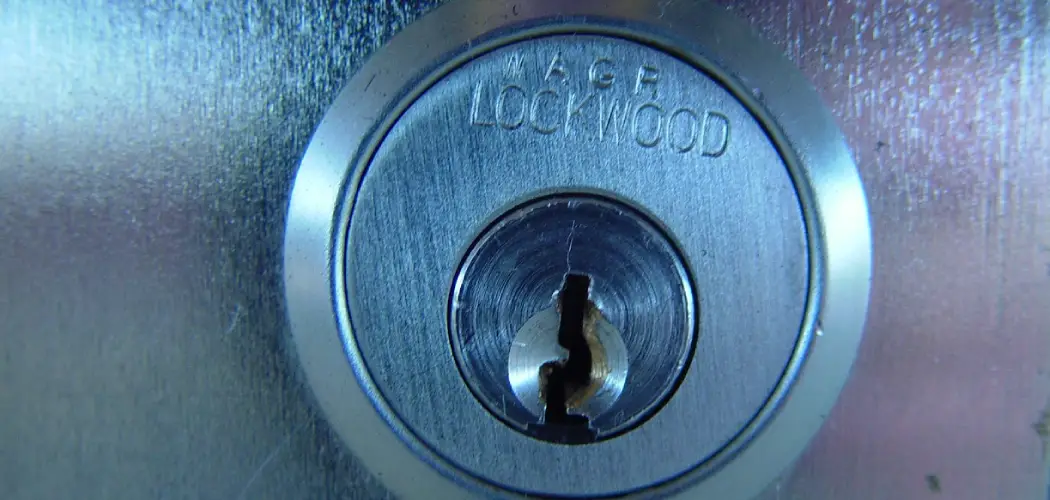Are you locked out of your storage unit because you lost your key or forgot the combination? Don’t worry. Breaking a storage cylinder lock is easier than you think.
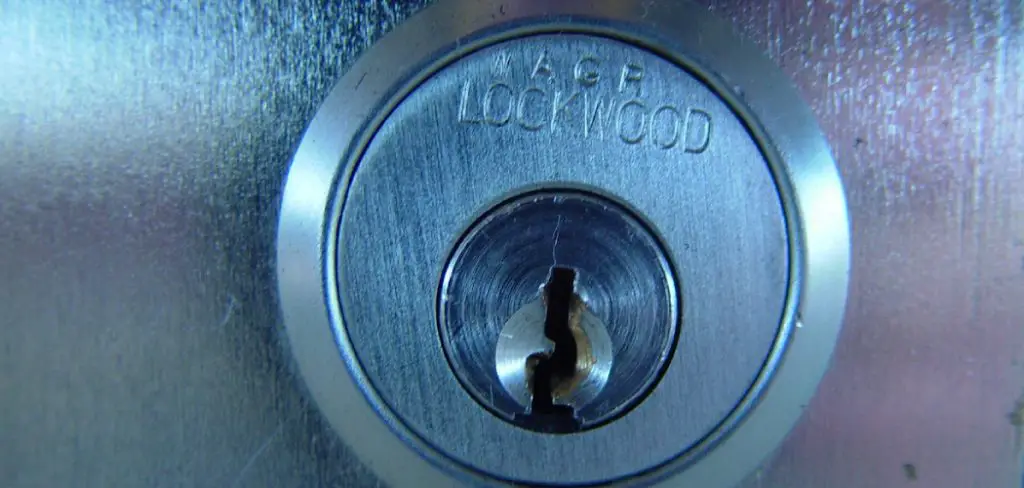
How to break a storage cylinder lock is a task that, while not commonly recommended, may be required under certain circumstances, such as losing a key to a personal storage unit or needing to access an old lock for which the key has long been misplaced. It’s important to note that attempting to break a lock should only be done on property that you own or have explicit permission to access, as doing so on others’ property without consent is illegal and can lead to serious legal consequences.
This guide will outline a few methods for breaking a storage cylinder lock, focusing on techniques that minimize damage to the surrounding structure.
What are the Benefits of Breaking a Storage Cylinder Lock?
Breaking a storage cylinder lock can save you time and money. Instead of waiting for a locksmith to arrive or going through the hassle of obtaining a replacement key or combination, you can quickly gain access to your belongings with these methods. Additionally, learning how to break a lock can be useful in emergency situations where immediate access is needed.
However, it’s important to note that breaking a lock should only be used as a last resort option. If possible, it’s always best to try other methods of gaining access before attempting to break the lock.
Overall, knowing how to break a storage cylinder lock can provide peace of mind and empower you to handle unexpected access issues quickly and efficiently.
What Will You Need?
Before attempting to break a storage cylinder lock, it’s important to gather the necessary tools and materials. The specific items needed may vary depending on the method chosen, but some common items include:
- A screwdriver or drill
- Pliers or a wrench
- A hammer
- Lubricant (such as WD-40)
- Replacement lock (in case the original lock cannot be salvaged)

Once you have these items, you can proceed with one of the following methods:
10 Easy Steps on How to Break a Storage Cylinder Lock
Step 1: Drilling the Lock
One of the most effective ways to break a storage cylinder lock is by drilling through the lock cylinder. Begin by placing a small amount of lubricant on the drill bit to help reduce friction and prevent the drill bit from breaking. Choose a drill bit that is slightly smaller than the diameter of the lock cylinder. Position the drill bit at the end of the lock where the key would normally be inserted. Start drilling slowly to create a guide hole, gradually increasing speed.
The goal is to drill through the pins inside the lock, rendering them ineffective. Once you feel a decrease in resistance, stop drilling. This signifies that the pins have been broken, and the lock mechanism can now be turned using a screwdriver. Remember to wear safety glasses to protect your eyes from metal shavings and use gloves to maintain a firm grip on the drill.
Step 2: Using Bolt Cutters
If drilling is not an option or if you prefer a more direct approach, using bolt cutters can be an effective method for breaking a storage cylinder lock. This method is especially useful for locks that are exposed and have a shackle that can be easily accessed. First, open the bolt cutters wide and position them around the shackle of the lock. Ensure that the cutters are as close to the base of the lock as possible to maximize leverage. Then, apply firm, steady pressure to the handles of the bolt cutters.
It may require significant force to cut through the metal, so be prepared to apply a substantial amount of pressure. Once the shackle has been cut through, the lock can be removed, providing access to the storage unit. Always exercise caution when using bolt cutters to avoid injury.
Step 3: Picking the Lock
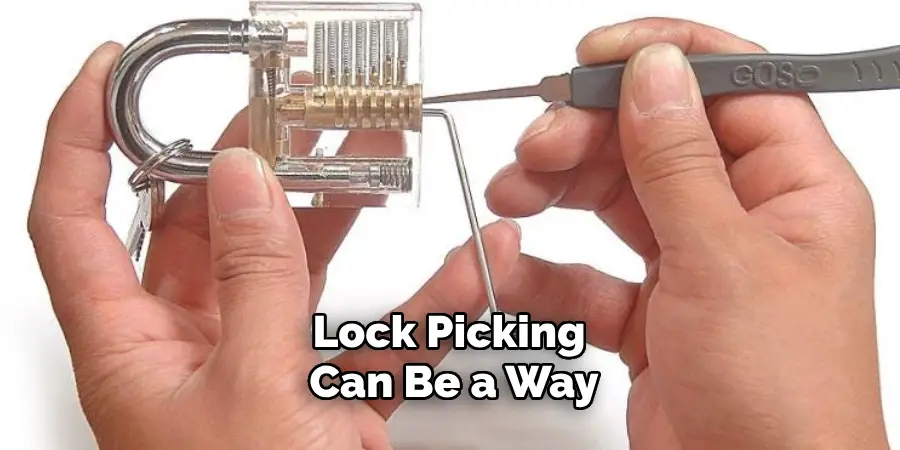
For those who prefer a less destructive method, lock picking can be an effective way to gain access to a storage unit without damaging the lock. This technique requires a lock pick set, which includes a variety of tools, such as tension wrenches and picks of different shapes. First, insert the tension wrench into the bottom part of the keyhole and apply a slight pressure in the direction the key would turn.
Then, use a pick from your set to gently manipulate each pin inside the lock cylinder. The goal is to push all the pins up until they align with the shear line, allowing the cylinder to turn freely. This method requires patience and practice, as it involves feeling for the subtle movements of the pins. If done correctly, you will be able to turn the lock cylinder with the tension wrench, unlocking the storage unit without any damage.
Step 4: Freezing the Lock
Another unconventional but effective method for breaking a storage cylinder lock involves using extreme cold to make the metal more brittle. For this technique, you will need a can of compressed air duster, commonly used to clean electronics. Hold the can upside down and spray the liquid onto the lock. The liquid, when released from the can in this manner, comes out extremely cold and can freeze the lock within seconds. After spraying for about 30-60 seconds, take a hammer and hit the lock firmly.
The sudden impact on the cooled, brittle metal may cause the lock to break apart or shatter, allowing you to remove it. This method is particularly useful if the lock is older or made from a less durable metal. However, it’s important to proceed with caution to avoid damaging the storage unit door and to wear protective gloves to prevent cold burns from the compressed air liquid.
Step 5: Shimmying the Lock
Shimmying is another non-destructive method that can be used to open a storage cylinder lock, particularly if it’s a padlock type. This method involves using a thin piece of metal or plastic – a lock shim – which is inserted into the space between the shackle and the lock body. For this, you can use a cut piece of a soda can or a thin plastic card. The shim is then maneuvered around the shackle, applying pressure where the locking mechanism engages.
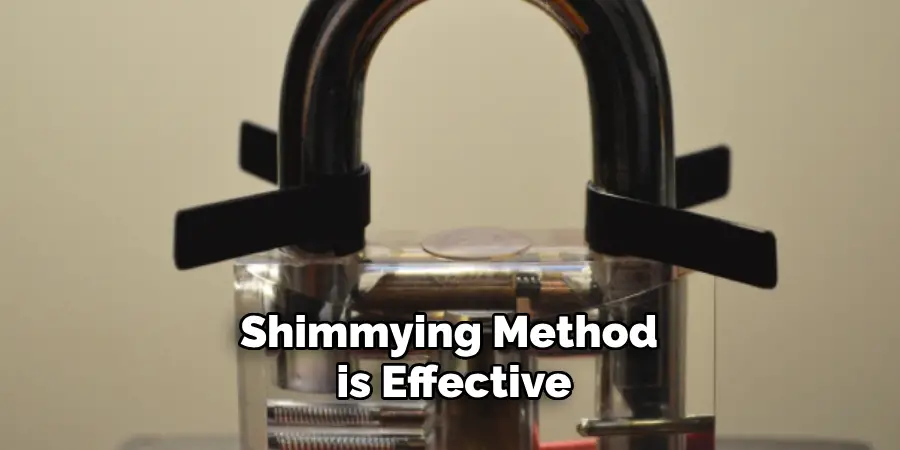
By moving the shim back and forth and around the circumference of the shackle, you aim to push the locking pawls (the small, spring-activated pins that lock the shackle in place) out of their locking position. This can be a bit tricky and may require several attempts, but with patience, the lock can typically be popped open without causing any damage to the lock or the locker. Remember, shimmying a lock requires a delicate touch to avoid breaking the shim or damaging the lock mechanism.
Step 6: Using a Master Key
In some cases, especially with older or standardized storage cylinder locks, a master key can be utilized to unlock the device without the need for physical breaking. Master keys are designed to open multiple locks from the same manufacturer or of the same type. To utilize this method, you would need to obtain a master key that matches the brand or type of lock you are attempting to open.
Insert the master key into the keyhole and turn it as if it were the original key. This approach requires access to the appropriate master key, which may not be readily available for all lock types. It’s also important to note that using a master key without authorization may have legal implications, so ensure you have the right to access the lock before attempting this method.
Step 7: Calling a Professional Locksmith
When all other methods fail or if you prefer to ensure the lock is opened without any damage to the storage unit, calling a professional locksmith is the best course of action. Professional locksmiths have the tools, skills, and experience necessary to open almost any lock without causing harm to the lock or the storage unit.
Additionally, a locksmith can provide valuable advice on how to replace the lock with a more secure option, if necessary. This method is the most straightforward and risk-free option, though it will incur a service charge. When choosing a locksmith, it’s crucial to select a reputable and licensed professional to guarantee the security of your storage unit.
Step 8: Electronic Lock Override

For storage units secured with electronic locks, an override method can be an option when physical keys or traditional lock-picking techniques are not viable. Many electronic locks are equipped with a manual override system, which can be accessed using a special code or key. This might involve removing a cover plate to reveal a keyhole or keypad where the override can be activated.
The specific process varies significantly among different lock brands and models, so consulting the lock’s manual or manufacturer’s guidelines is essential. It’s also pertinent to mention that attempting to override an electronic lock without proper authorization could lead to legal consequences or damage to the lock mechanism. Therefore, this method should be utilized with caution and preferably under the guidance of a professional locksmith or the lock’s manufacturer.
Step 9: Protecting Your Storage Unit
In any case, the most effective way to prevent lock breaking is to take preventative measures and secure your storage unit with a high-quality lock. Consider investing in locks that are more resistant to picking or shimming attempts, such as disc detainer locks or dimple key locks.
Additionally, practicing good security habits like regularly changing your lock’s combination or code and properly storing your key or access card can go a long way in preventing unwanted tampering. Ultimately, the best way to protect your storage unit is by thoroughly researching different lock options and selecting one that offers the highest level of security for your specific needs.
Step 10: Enjoy Your Secure Storage
With these methods at your disposal, you can confidently secure your storage unit and have peace of mind knowing that your belongings are safe. Whether it’s through preventive measures or techniques for opening a locked storage cylinder, the most important thing is to handle each method with caution and respect for the property and security of others. Utilize these strategies responsibly and only when necessary, and your storage unit will remain a secure space for all your belongings.
By following these steps and implementing proper security measures, you can ensure the safety of your storage unit and its contents.
5 Additional Tips and Tricks

- Use lubricant: If you encounter a storage cylinder lock that is difficult to turn, using a lubricant can help loosen up the internal mechanisms. Apply the lubricant directly into the keyhole and use a key to turn it back and forth to distribute the oil evenly. This can make it easier for you to pick or bump the lock.
- Utilize tension wrenches: Tension wrenches are essential tools for lock picking. They help create the necessary tension in the lock to allow you to manipulate the pins and open the lock. There are various types of tension wrenches, such as L-shaped, Z-shaped, and feather-shaped. Experiment with different types to see which one works best for you.
- Try raking: Raking is a lock-picking technique that involves using a pick to quickly move the pins up and down in the keyhole. This can be an effective method for opening simple storage cylinder locks. However, it may not work on more complex locks.
- Get familiar with lock terminology: Knowing common lock terminology can be useful when trying to open a storage cylinder lock. Some terms to familiarize yourself with are picking, raking, binding pin, driver pins, key pins, and shear line. Understanding the function of each component can help you figure out how to manipulate them.
- Practice makes perfect: Lock picking is a skill that requires practice. The more you practice, the better you will become at it. Start with simple locks and work your way up to more complex ones. Also, try different techniques and tools to see which ones work best for you.
In addition to these tips and tricks, it is important to always be cautious when attempting to pick a storage cylinder lock.
5 Things You Should Avoid
- Using excessive force: Trying to force a lock open by applying excessive pressure can damage the lock and the tools you are using. It may also permanently jam the lock, making it even more difficult to open.
- Neglecting the use of proper tools: Utilizing inappropriate tools not designed for lock picking can damage the lock’s internal mechanisms. Always use the correct lock-picking tools to avoid causing unnecessary harm.
- Overlooking legal implications: Always ensure that you have the legal right to pick a lock. Picking a lock without permission can be illegal and result in serious consequences.
- Ignoring the need for discretion: Picking locks, especially in public places, can draw unwanted attention and raise suspicions. Always practice lock-picking discreetly to avoid misunderstandings.
- Forgetting to maintain your tools: Proper maintenance of your lock-picking tools is crucial for their effectiveness and longevity. Dirty or rusty tools can damage a lock and reduce your chances of successfully opening it. Regularly clean and oil your tools to keep them in good condition.
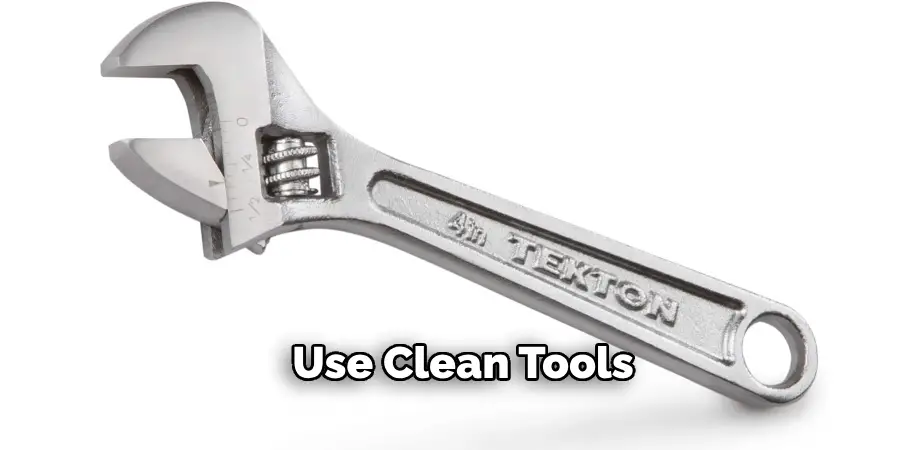
By avoiding these mistakes and following the tips and tricks mentioned above, you can become a proficient lock picker in no time. Remember to always use your skills responsibly and ethically.
How Do You Pick a Storage Lock With a Paperclip?
Picking a lock with a paperclip is possible, but it requires some skill and practice. Here are the steps to follow:
- Straighten out the paperclip: First, straighten out the paperclip as much as possible. You can use pliers to help you get a more precise bend.
- Make a tension wrench: With one end of the paperclip, create a small L-shaped bend. This will be your tension wrench.
- Create the pick: With the remaining straight end of the paperclip, make a slight curve at the tip. This will be your pick.
- Insert the tension wrench: Insert the tension wrench into the bottom of the keyhole and apply slight pressure in the direction you would turn the key. This will create tension in the lock.
- Insert the pick: Insert the curved end of the pick into the top of the keyhole and gently move it back and forth, trying to manipulate the pins inside.
- Continue applying pressure: While moving the pick, continue to apply slight pressure with your tension wrench. You may feel or hear a slight click when the pins are set in place. This means you have successfully picked the lock.
- Test the lock: Try turning the tension wrench in the direction of unlocking while still maintaining pressure. If it doesn’t work, adjust your pick and try again until the lock opens.
Remember, picking a lock with a paperclip is not always possible and may only work on simple locks. It is always best to use proper lock-picking tools for more complex locks.
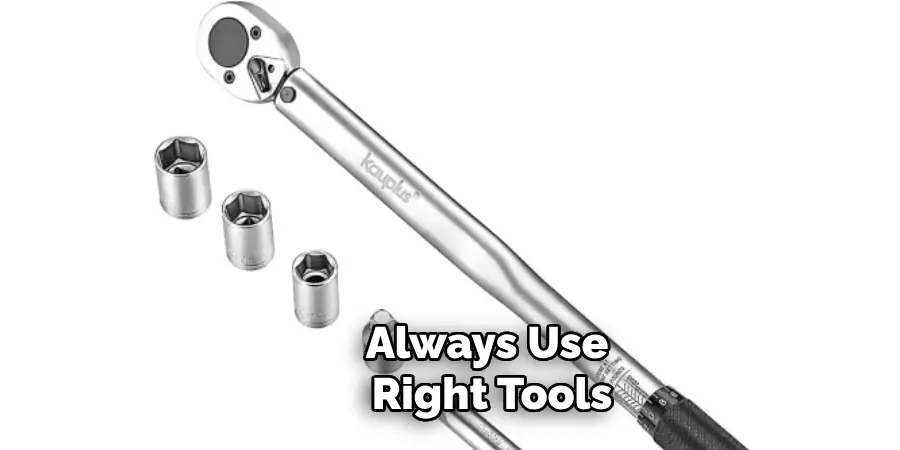
Conclusion
In conclusion, how to break a storage cylinder lock, whether through lock picking practices or using improvised tools like paperclips, demands a blend of skill, patience, and the right technique. The key to successful lock picking lies not only in the method chosen but also in understanding the mechanics of the lock and consistently applying the fundamental principles laid out in the tips and strategies discussed. It’s crucial to remember the importance of acting legally and ethically, ensuring that you have the right to open the lock.
With dedicated practice, the right tools, and a mindful approach to the legal and ethical aspects, anyone can develop the proficiency needed to tackle simple to moderately complex locks. However, for the highest security locks, professional tools and techniques have become increasingly necessary.
In all endeavors, maintaining your tools and continually expanding your knowledge and skills will keep you prepared for virtually any lock-picking challenge.

